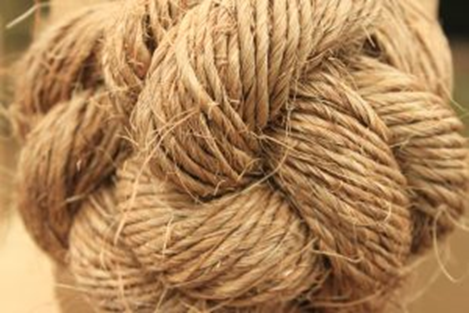Eco Friendly fibers And Its Application


Introduction
Clothing is something that is required by all human beings. It is one of the most fundamental requirements needed to survive. The textile industry is considered as the most ecologically harmful industry in the world. The clothing and textile industry is huge. Environmental impacts occur at every stage of the life cycle of a product. The garment industry has contributed to the global warming from the stage of growing of the fibres, yarn fabrication, fabric manufacture, wet processing and manufacturing of the garment, its distribution and transportation to stores and customers and finally the disposal of the product. The first clothes were made from natural elements: animal skin and furs, grasses and leaves, and bones and shells. Clothing was often draped or tied; however, simple needles made out of animal bone provide evidence of sewn leather and garments from at least 30,000 years a now the clothing has grown into a serious problem go involving many chemical processes when societies have begun building their commerce. It is time again to use the fibers which are eco-friendly and whose manufacture do not cause any harm to the environment. The fibres are generally defined as a flexible, macroscopically homogenous body having a high length/width ratio and a small cross section. It refers collectively to a wide variety of forms of fibrous materials. Conventional standards divide fibres into:
- Natural fiber and
- Man-made fibres (Chemical fibres).
Natural fibres are sub divided into Organic (Vegetable and animal) fibres and Inorganic (mineral) fibres. Man made fibres are subdivided into fibre from by a chemical reaction (regenerated fibres) and fibres made from synthetic polymers (synthetic fibres).
Characteristics of eco friendly fibres:
- Eco friendly fibers are preferred in hot and humid climates because they keep the body cool.
- They are biodegradable and have no negative effect on the environment.
- They are resistant to mould and mildew and are disease free.
- They are grown without the use of pesticides and chemicals.
- Most of them are antibacterial, skin friendly and have certain healing properties.
All natural fibers are not eco-friendly. If there is extensive application of harmful pesticides or insecticides while cultivating, say, cotton- it does not remain eco-friendly. Also the textile chemicals applied during the finishing and other processes of textile production destroys the eco-friendly character of these fibers. However, if it is an organic cultivation without any pesticides etc. and if they are processed with mechanical or other ways without any chemicals then only a fabric can be termed as eco-friendly. The same is true for animal fibers like wool where pesticides are used in sheep dips and harmful drugs are given to cure animal diseases but then organic wool is there which an eco-friendly fiber is also. As far as man made fibers are concerned they too can be eco-friendly. These are regenerated fibers. They are of two types – having protein origin and cellulose origin. Protein origin regenerated fibers are obtained from plant protein like corn, soy, peanut etc. or from animal protein like casein from milk. Regenerated fibers of cellulose origin are derived from cellulose of wood pulp or leaves such as rayon fiber. If manufactured in an environmentally friendly way, they can be very well put into the category of eco-friendly.
The following are the Eco-friendly fibres:
- Eco spun fibre
- Aloe Vera fibre
- Nettle fibre
- Pineapple fibre
- Milk protein fibre
- Bamboo fibre
- Banana fibre
- ECO SPUN FIBRE
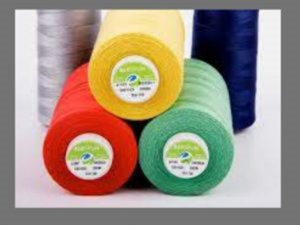
Ecospun is a polyester fiber made from 100% recycled plastic bottles. It can be used to create various fabrics, including fleece fabrics. The Ecospun fiber can be used by itself, or it can be blended with other fibers such as cotton, wool, and tencel.
Environmental Benefits of Ecospun fibres
Ecospun enables billions of plastic containers to be recycled each year, instead of them being buried in landfill. Currently, less than 30% of plastic bottles produced in the US are recycled. Given the fact that over 40 billion plastic bottles are produced in the US each year, this is a huge environmental problem. Furthermore, it takes over 700 years for each of these plastic containers to decompose!
What is Ecospun used for?
Ecospun, whether by itself or blended, can be used in many products. Here are some examples:
- Clothing (eg, vests, jackets, pants)
- Blankets
- Carpets
- Wall coverings
- Automobile interiors
- Various home furnishings .
- Fiberfill (eg, filling material for cushions)
- Craft felt
How is Ecospun Made?
- Plastic containers are collected from curbside and community recycling centers
- The containers are sorted by type and color
- All labels and caps are stripped off
- The plastic containers are then washed
- Then they’re crushed
- Then they’re chopped into flake
- The flakes are then melted and extruded to create fiber
- The fiber is crimped, cut, drawn, then stretched into the desired length (based on its strength), then baled.
2.ALOE VERA FIBRES
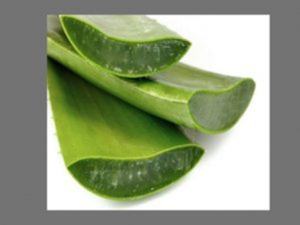
Aloe Vera is basically a native plant of Africa. It is also known as lily of the desert and plant of immortality due to its medicinal effects. This plant has 96 percent of water content. The leaf of this plant contains over 75 nutrients and 200 active compounds such as 20 minerals, 18 amino acids and 12 vitamins. The content of the plant helps in rejuvenating the skin cells helps in the formation of healthy dermis and fights against skin damage. Innovations in the textile field have embedded the virtues of aloe vera in garments, which prevents ageing of the skin; rejuvenates skin cells, and keeps skin free from microbial infections. Garments are made of a micro fibre with an open mesh construction that improves the transport of moisture to the skin.
Aloe Vera has found its way into cloth. Weavers in Tamil Nadu are experimenting with it to make colorful sarees. Weavers in Anakaputhur, Chennai appear are using Aloe Vera fibre in saree-making. “With the price of yarn increasing, they thought of finding a natural fibre to make sarees. First, they used banana fibre, and now they are using fibre from the Aloe Vera plant. Sarees made from Aloe Vera fibre are in demand.
Aloe Vera in textile fabrics
Micro encapsulation technology helps to add aloe vera in the fabrics creating endless possibilities in the textile segment. Aloe Vera content is embedded into airtight and waterproof micro capsules. These micro capsules are miniature containers, manufactured with a protective polymeric coating or melamine shell.
These shells are able to protect its contents from evaporation, and contamination until it is released. The capsules are bonded with the fibres during the process when fabric is manufactured. The capsules open when the fabric is touched or rubbed. When the garment is tailored, these capsules remain as a part of the clothing. When the garment is worn, the aloe-vera in the garment is applied on the skin in a regular basis. This tolerates a temperature of 130ºC.
This type of fabric is mainly used in manufacturing inner garments, as they are next to the skin. Apart from keeping the body warm; it also has some additional functions like absorbing bad smell, and providing anti-bacterial features. They are used in the manufacture of under garments, stockings etc. This will be more beneficial for the making of infant wears. Mothers can now protect their infants against chaffing by putting aloe-vera enriched clothes.
Aloe Vera enriched garments are in the initial stages of development. Not much is known about the textile applications of this wonder, medicinal plant. Dermatology tests regarding the textile applications of these fibres were conducted by a research university in Germany. A textile research centre in Krefeld, Germany has successfully attempted to apply this substance on the surface of the material. Currently, these garments are manufactured in Barcelona, Spain.
3.NETTLE FIBRES
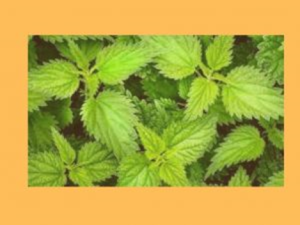
Stinging nettle fibres can be used to create eco-friendly clothing.Stinging nettle grows in the wild and is widely known as weed. Nettle fibre can be spun into a yarn and used as a fabric for clothing and many other uses. Stinging nettle is a natural moth repellant and nettle fibre has been used for clothing in many cultural.
Here are some examples of nettle yarn has been used for:
- Nettle is often used in Nepal for backing wool carpets.
- The uniforms from Napoleon’s Armada were made from nettles.
- In Nepal, nettle is used for both fine clothing and for sailcloth.
Nettle fibres are hollow, which enable them to provide natural thermal insulation for the winter months or cooler climates. But they are also suitable for summer months or warmer climates too. This is because the yarns can twist themselves to close the hollow core and reduce insulation.
4.PINEAPPLE FIBRES
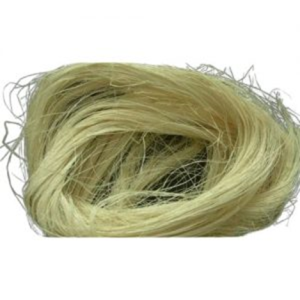
A textile fiber obtained from pineapple leaves for making fabrics is called Piňa. It has its history in the Philippines, many years ago, tracing to Hispanic times. The people there used to extract fibers from pineapple leaves and through hand spinning, made a soft, sheer and a little stiff fabric- the piňa fabric
Characteristics of Piňa Fabrics
1.Naturally glossy.
2.Sheer but stiff so that creative works like embroidery can be easily done on it.
3.Lightweight.
4.Blend very efficiently with other fibers.
5.Very soft, even softer than hemp.
6.Very good texture, even better than silk.
7.Easily cared for.
8.It is eco- friendly like other plant fibers such as banana fibers, bamboo fibers etc.
Pina fabric is lightweight, easy to care for and elegant in appearance similar to linen fabric. It is also blended with other fibers such as cotton, silk and polyester to make fabrics having maximum qualities. Pineapple silk is, in fact, considered the queen of Philippine fabrics.
Extraction of pineapple fibre
Fibres from the pineapple leaves could be extracted by hand as well as by a decorticator. The common method in practice is a combination of water retting and scrapping. The process of pineapple fibre extraction and fabric formation afterwards in Philippines involves ploughing of leaves, scraping, extraction, washing, drying, beating, hand knotting, warping and weaving. Traditional hand method and hand tools (primitive technology) are used to extract the fibre. The fibre is washed in running or clean water, dried in shade, beaten by a piece of bamboo to soften, hand knotted and taken for weaving in handlooms. The fibres can also be extracted by machine.
Uses of Piňa Fabrics
The widest application of Piňa fabrics is in making traditional dresses of the Philippines, the Barong Tagalog, and wedding attire for men, and blouses for women. Other dresses such as kimonos, panuelos, gowns etc. are also made from it. Apart from clothing, handkerchiefs, table linen, mats, fans, bags are also made from different varieties of piňa. fabrics.
5.MILK PROTEIN FIBRES
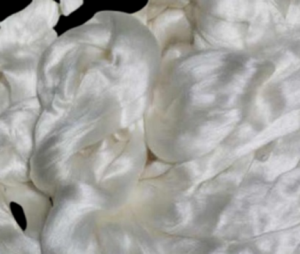
Milk Yarn is made from milk protein fibers. To make it, milk is first dewatered, i.e. all the water content is taken out from it and then it is skimmed. New bio-engineering technique is then applied to make a protein spinning fluid. This fluid is suitable for wet spinning process through which the final high-grade textile fiber is made. While spinning, a solvent is used by most of the manufacturers and micro-zinc ion is embedded in the fiber which gives it the characteristics of being bacteriostatic and durable. It combines the advantages of both, natural as well as synthetic fibers.
Milk protein fiber is a kind of fresh fiber that has very healthy functions. It contains eighteen amino-acids, which are beneficial to human health. It can be spun alone or with cashmere, silk, spun silk, cotton, wool, ramie and other fibers to make fabrics. The fabrics made of these fibers nourish and take care of skin in a very efficient manner by keeping away allergies and even wrinkles. The fabrics made from milk yarn are primarily used in manufacturing kids wear, top-grade underwear, shirts, T shirts, loungewear, etc
Characteristics of Milk Yarn
The milk yarn has got many properties that are enough to make it one of the most sought after fabrics of the future.
- The natural protein humectants factor is present in the milk fiber, which makes skin more delicate and smooth. As such Fabrics made of milk yarns are suitable for household textiles.
- The amino acids present in the fiber make it antibacterial and antifungal.
- It is glossy and luxurious in appearance, feel and comfort ability, just like silk.
- It has many beneficial chemical properties such as moderated fiber breaking tenacity and modulus, etc.
- It is hygroscopic in nature; as such it absorbs moisture very well.
- It is very easy to dye and can be dyed under normal temperature.
- It has the property of color fastness.
- It can be blended well with other fibers such as cotton, modal, tencel and bamboo etc.
Although its association with milk itself certifies that milk fiber is a naturally healthy fiber yet for authentication beyond doubt, it has been granted the International Ecological Textile Oeko-Tex Standard 100 Authentication in April, 2004.
Milk Fiber Blended with Other Fibers
We now know that milk fiber can be blended with many other fibers like cotton, cashmere, silk etc. When milk fiber is combined with these fibers, the resultant fabric gets different qualities adopted from different fibers but one common quality that is retained in all the blends is that of its being a healthy and eco-friendly fiber.
Milk Fiber blended with silk, bamboo fiber- the Cool Fiber:
This blended fiber is moisture retentive, sweat conductive, comfortable and ventilative which gives it the property of coolness. It is soft and smooth with an attractive gloss, reflecting elegance in the personality of the wearer- and it is healthy.
Milk Fiber blended with mercerized wool, cashmere- the Thermal Protective Fiber:
Milk protein fiber has a kind of three-dimensional and multigap structure. With its properties of light weight and high moisture absorption, the milk fiber when blended with wool and warm cashmere, becomes highly cold proof material- and it is comfortable and healthy too.
Milk Fiber blended with cotton, cashmere- for top grade under clothing’s:
The milk protein contains plenty of amino acid and natural wet protecting genes. It is capable of restricting fungus too. The natural fibers, cotton and cashmere too have more or less similar qualities and when blended with milk fiber, the properties are enhanced to make comfortable, healthy and well fitted under wears.
Milk Fiber blended with cotton, silk- for home textile:
Milk Fiber regulates air quality and when mixed with cotton or silk it also adopts the qualities of comfort ability, durability and elegance making it perfect for home furnishings.
In fact, the fabrics made of milk protein fibers are so skin friendly that the dream of many about taking milk bath can come true now. This was one thing, which, only Cleopatra could have done to enhance her beauty and now that can be done by any average person, thanks to the astonishing milk yarn .
Applications
Because of the healthy & bacteriostatic nature of milk Fiber, it is being considered as a perfect material for manufacturing of underwear. As discussed above, milk casein proteins are considered as a main ingredient of milk protein Fiber, which can lubricate the skin. The milk protein contains the natural humectants factor which can help to maintain the skin moisture, to reduce the wrinkles & to smoothen the skin – which may help to realize the people of taking milk bath. The major usages of milk Fiber are as given below.
- T-Shirts
- Underwear
- Sportswear
- Ladies outerwear
- Sweaters .
- BAMBOO FIBRES
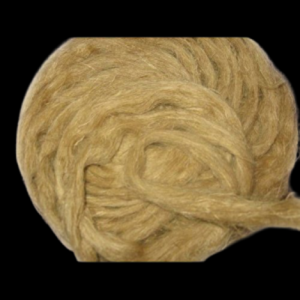
The bamboo fiber is made from the starchy pulp of bamboo plants. This textile fiber is fabricated from natural bamboo and other additives. In fact, bamboo fiber is a regenerated cellulose fiber, which is produced from bamboo pulp, processed from bamboo culms. It looks like cotton in its un-spun form. Many bamboo fiber manufacturers apply extensive bleaching processes to turn the color of bamboo fiber into white. However, the companies engaged in producing organic bamboo fabric leave the bamboo fiber unbleached. Bamboo fiber is thinner as compared to hair and has a round and smooth surface which makes it abrasion proof.
Extraction of Bamboo Fiber
Two types of processing are done to obtain bamboo fibers- Mechanical Processing and Chemical Processing. However, in both the processes, the raw bamboo has to be split to get bamboo strips. After that, bamboo fiber is extracted either through chemical or mechanical processing.
Chemical Processing:
It is basically hydrolysis alkalization. The crushed bamboo is “cooked” with the help of Sodium hydroxide (NaOH) which is also known as caustic soda or lye into a form of regenerated cellulose fiber. Hydrolysis alkalization is then done through carbon di sulfide combined with multi phase bleaching. Although chemical processing is not environmental friendly but it is preferred by many manufacturers as it is a less time consuming process.
Mechanical Processing:
In this method, the crushed bamboo is treated with biological enzymes. This breaks the bamboo into a mushy mass and individual fibers are then combed out. Although expensive, this process is eco friendly
.
Characteristics of bamboo fibre:
Bamboo fiber is naturally anti-bacterial, UV protective, green & biodegradable, breathable & cool, strong, flexible, soft and has a luxurious shiny appearance. ales it abrasion proof.
Smooth, Soft and Luxurious Feel:
Bamboo fiber can be softer even than silk fiber when spun into yarn. It has a basic round surface which makes it very smooth and to sit perfectly next to the skin.
Good Absorption Ability:
Bamboo fiber absorbs and evaporates sweat very quickly. Its ultimate breathability keeps the wearer comfortable and dry for a very longer period. It is 3-4 times more absorbent than cotton fabrics.
Temperature Adaptability:
Fabrics made from bamboo fiber are highly breathable in hot weather and also keep the wearer warmer in cold season. Bamboo is naturally cool to the touch. The cross-section of the bamboo fiber is filled with various micro-gaps and micro-holes leading to much better moisture absorption and ventilation. It is also very warm in cold weather, because of the same micro structure as the warm air gets trapped next to the skin.
Antibacterial:
Bamboo is naturally antibacterial, antifungal and anti-static. Bamboo has a unique anti-bacteria and bacteriostasis bio-agent named “bamboo kun” which bonds tightly with bamboo cellulose molecules during the normal process of bamboo fiber growth. This feature gets retained in bamboo fabrics too. Many tests have been conducted whose results show over 70% death rate after bacteria was incubated on bamboo fiber fabric. Tests by the Japanese Textile Inspection Association shows that, even after fifty washes, bamboo fabric still possessed these properties. It makes bamboo fabrics healthier, germ free and odor free.
Applications of Bamboo Fiber
After gaining popularity as a green fiber, bamboo has found place in significant fashion circles. However, questions are often raised due to textile chemicals applied to bamboo for making them usable as fibers for clothing and other textile products.
Bamboo Clothing: The inherent anti fungal and antibacterial properties of bamboo fabrics make it suitable for such clothing as under wears, t-shirt and socks. It is especially preferred for making summer clothing as it gives protection against UV rays and for being naturally cool. The softness, sheen and drapabaility of bamboo fabric make it suitable for fashion clothing and fashion accessories like scarves. As it has good absorption and is breathable, it can be used in making any type of garments especially sports wear and inner wear. In fact, some manufacturers use a blend of 4% Lycra with bamboo to make sportswear. The softness of bamboo yarn also makes it ideal for making infant wear.
Home Furnishings Fabrics: Bamboo fabric has also come to occupy important place in manufacturing of home furnishings due its many qualities including, softness, strength, & durability among others. It is used in making cushion covers, table linen, bed linen, curtains, beddings and pillow, kitchen linen etc. Wallpapers and curtains made from bamboo fabric can absorb ultraviolet radiation very well. Upholstery fabrics are usually made with bamboo blends.
Bathroom Textiles: Bamboo fabric is increasingly being used in making bathroom furnishings. Bamboo bath towels and bath robes have soft and comfortable feel and excellent moisture absorption capability. The natural antibiotic property provides hygienic conditions as well as prevents bad odor. They are also suitable for making bath mats due to good absorbency.
Non woven fabrics: Bamboo pulp is also used for making non woven fabrics that are then used in making hygiene products such as sanitary napkin, masks, mattress, absorbent pads, and food-packing bags. Again, they are preferred for such products due to anti-bacteria and absorption properties.
Medical and Hygienic Clothing & Products: Apart from non woven, bamboo fabric itself is also used in the production of such items as textiles for surgical practices including masks, bandage, gowns etc. apart from linens, towels and drapes in hospitals.
7.BANANA FIBRES
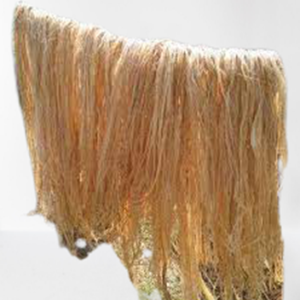
A native plant of Southeast Asia, banana is now grown extensively in all tropical countries for fruit, fiber or foliage.
Fibre extraction
Banana fibre is an eco friendly leaf fibre obtained after harvesting of its fruits. These leaves are left to rot in the fields; they merge with the soil and go waste. These fibres are obtained mainly from stem. The fibres obtained from the central core are of lower quality compared to the fibres obtained mainly from pseudo stem. At present, banana fibre is available in three qualities.
- Fine quality which is silken in appearance.
- Medium quality suitable for yarn and making yarn and making carpet.
- Long fibres suitable for cordage.
Banana fibre is whiter, finer, softer and more lustrous and porous than sisal fibre. It has knotty appearance and the banana fibre cracks when folded. The fibres take up dyes quite evenly. Designed colorful garments look beautiful and have great appeal and acceptability
Application:
It is used to make fancy items like bags, table mats, purses, etc and their latest venture is weaving of banana fibre fabric, having warps of cotton and weft comprising of single banana fibre strand joined together by knot, which is a very tedious and time consuming process. The banana fibre apparels are wearable with a lining and are well suited for top garments. It is also used in paper industry for making tissue paper, filter paper, special non woven paper, document paper, paper for surgical and hygienic applications, coffee bags, textile dye filters, base for meat casing, printing papers, exchange bills, paper for fat body and lining for gold and silver frills.
If further utilization of these is carried out, it would lead to harnessing of huge economical waste to an economical advantage and in turn would provide gainful employment. Novel and eco-friendly banana fibre apparels are used for local and export markets. Banana polyester composites are used in fabricating consumer articles.
Conclusion:
As textile technologist we should look into quality as more than how apparel looks or functions, which also includes the way it affects the living environment, our planet and the quality of human life. This means working with such type of materials and processes minimize the negative impact on environment and thereby relieve our overburdened planet. As the awareness among consumers has grown it is beyond any doubt that there is a promising future for eco friendly fibres.
Even though eco friendly fibres are getting used now a days in many clothing applications, still there is a scope for them to completely replace non eco friendly fibres in all of the clothing applications and many such eco friendly fibres and eco textiles should completely reach every consumer.
RELATED LINL



